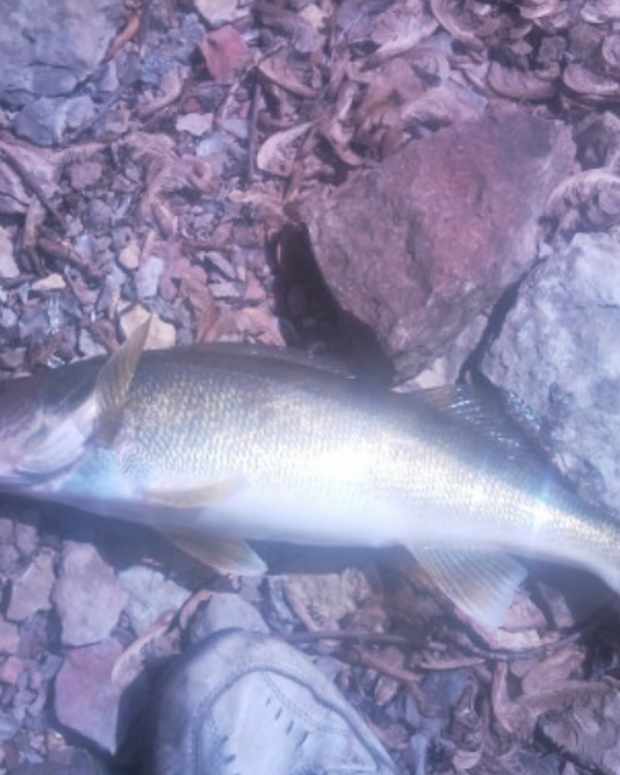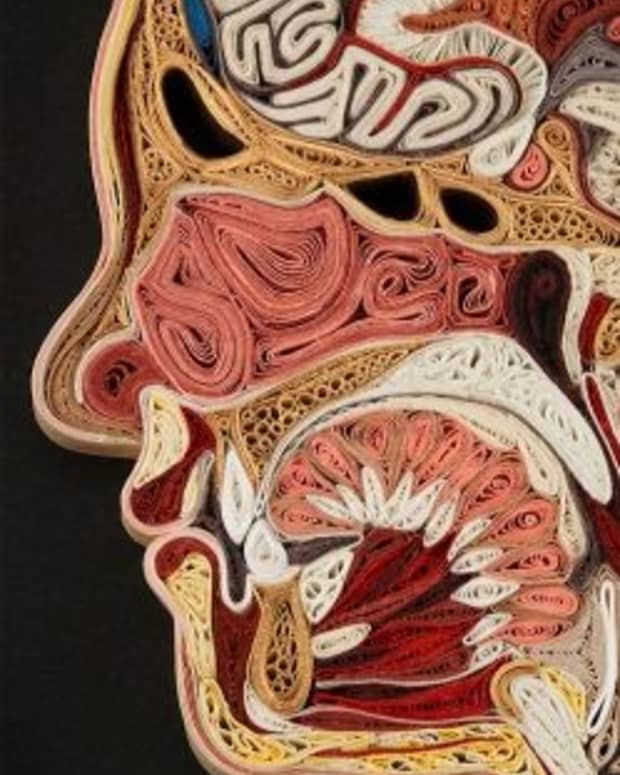Compost Holes: A Cheap and Easy Way to Enrich Your Soil
How to Start In-Ground Composting
With in-ground composting, you can enrich the soil in your garden without bins, piles, or pitchforks. You won't even need red wigglers (the Cadillac of worms). So, what will you need?
Tools You'll Need
- Something to dig with
- A bucket of kitchen waste
- A minimal amount of time
Of course, compost holes may not be the right choice for all gardeners all of the time. But there are certain situations for which they're very well suited and certain types of gardeners for whom they're perfect.
Below, you'll find five good reasons to compost in-ground, as well as advice on what to compost. And you'll get directions for two methods of in-ground composting—the one-hole and the two-hole method.
Reasons to Hole Compost
Here are some good reasons to hole compost.
Small Yard? No Problem
If your yard is too small to accommodate a compost bin or tumbler, you probably don't have a spot in the sun big enough for a compost pile either. But you do have room for compost holes. The only space they take up is about 12 inches--underground.
Lean Wallet? That's Okay
On a tight budget? Compost holes are a good alternative to expensive bins and elaborate boxes. The equipment required is minimal: a shovel (or a spade if the ground is soft) and kitchen scraps. And you don't have to add costly composting activators either.
No Time? No Worries
Hole composting (at its most basic) requires only three steps: digging a hole, dumping kitchen scraps into it, and then refilling the hole with soil. If the ground is soft, it takes five minutes or less. What a great way for busy gardeners to enrich their soil!
Planting Trees? In-Ground Compost First
Before you buy a new tree or shrub, create a compost hole where you intend to plant it. During the summer or fall, fill it with composting materials and soil, and top it with mulch. By spring planting time, the soil will be friable and rich--perfect for feeding the newest member of your landscape.
Raised Beds? You Can Definitely Dig It
Compost holes are also a super-easy method for building up the soil in raised beds. Because raised-bed soil is usually soft, holes take little time to dig. And you can in-ground compost all year round, so long as the ground isn't frozen.
What's in Your Compost Pail?
What is in your compost pail is very important.
What to Use
Fill your compost pail with vegetable and fruit trimmings, such as potato and banana peels, apple cores, and the butt-ends of Romaine lettuce and celery. Egg shells, tea leaves, coffee grounds (with filters), peanut shells, and soured milk are also great additions.
Additional common household wastes that can be added to your bucket include wood ashes, shredded newspapers, and recyclable egg cartons. You can even empty your hairbrush and your pet's brush into the bucket. After all, hair contains nitrogen.
What Not to Use
All kitchen scraps aren't compostable. For instance, meat, grease, bones, and cheese shouldn't go into your compost bucket. Not only will they attract animals, but they will also take a long, long time decompose.
Anything that could harbor disease or that contains ingredients harmful to plants should be excluded, such as pet feces, sick houseplants, coal ash, and color newspaper supplements.
Good (And Bad) Household Waste for Compost Holes
| What to Use | What NOT to Use |
|---|---|
vegetable & fruit rinds | meat |
eggshells | bones |
tea leaves | grease |
coffee grounds (with filters) | cooking oil |
sour milk | cheese |
pet and human hair | pet feces/used kitty litter |
black & white newspaper | color supplements |
wood ash | coal ashes/charcoal briquettes |
The One-Hole Method
The one-hole method is simple:
- Dig a hole eight to 18-inches deep. The hole should be at least eight inches deep so that the soil barrier protects the composting material from pests. And it should be no more than 18 inches so that it won’t leach into the water table.
- Dump in one to two quarts of composting material (about one or two inches).
- Fill the hole back up with soil.
Want to Speed Up the Process?
Kitchen scraps take one to six months to decompose, depending upon moisture levels in the soil, the temperature, the soil type, and the type of scraps that you bury. If you want to speed up the process, cut kitchen waste into small bits or process it in a blender before dumping it into the hole.
As soon as you bury your scraps, you can plant seeds and small seedlings on top. For large transplants, like trees, wait until the scraps have decomposed.
When you want to prepare the soil for a new tree or shrub, sow seeds, or transplant seedlings, try the one-hole method. It’s also great for gardeners with a pail full of kitchen waste on their hands and little time.
Have time to experiment? Check out the three-part blog at "Real Food & Scandalous Gardening Secrets." It offers step-by-step directions for layering a variety of composting materials.
The Two-Hole Method
The two-hole method is a little more complicated than the two-hole, but not much.
- First, dig a hole between the rows in your garden. For the reasons noted above, it should be approximately one-foot deep.
- Dump about two quarts of kitchen waste into the hole.
- Then, fill it with dirt acquired from digging a second hole beside the first one.
- Fill the second hole with kitchen scraps topped off with dirt, either from the first hole or from a third one.
- Stop at two holes, or continue until you run out of composting materials. If you don't have enough kitchen waste, you can dump in store-bought compost instead.
The two-hole method is also a good way to improve the soil in a fallow raised bed.
This article is accurate and true to the best of the author’s knowledge. Content is for informational or entertainment purposes only and does not substitute for personal counsel or professional advice in business, financial, legal, or technical matters.
Comments
Jill Spencer (author) from United States on September 06, 2019:
Awesome! Yes, it is really cool to know others are recycling, reusing and re-purposing. We're in it together! Thanks for your comment. J
Virginia Allain from Central Florida on September 03, 2019:
I've been doing this at my summer cottage by digging shallow holes in the woods for my vegetable and fruit scraps. I take them out daily so I won't get fruit flies inside. Glad to know that others are doing this too.
ed on June 12, 2018:
Hey Jill this is Shiva...... How did you like the story?..... When I was writing it I had tears in my eyes.... The story reminds of someone who is looking in the mirror and their own image turns around and walked away... The Bible says that man was created in God's own image.....
ed on June 11, 2018:
The last part of the story is...... All the people had to do is what the messenger said. Being said from the spirit of God. To help create the new world order. Under God...
But the messenger would need the permission from the people all over the world. For it to happen. After reading this, listen to. One republic : apologize. The song...
ed on June 11, 2018:
So in the man's moment in the pit of despair and tears, God gave the man power, and the man took the Earth and all the people in it , placed them in the palm of his hands and crushed them into dust from which they came. And the Earth and the people were placed into the kingdom of darkness, never to see the light of god again. As for the man, he was sent to the kingdom of darkness and never to come back out again. Then God sat on top of his stone crying and crying and crying, which seemed like forever. Then God forgot about the Earth and the people; so he got up and walked away to make his next creation. But in the back of his mind he knew that everytime he would create, whatever he creYed would not want him too... So as a form of love that was his his spirit he kept on moving forward creating, because that is what he loved to do. Hoping that one day one of his creations would come looking for him as his own form of love.
From the messenger of God. AKA Eddie aka Shiva
ed on June 11, 2018:
To do was make the entire world and all the people rich and overflowing with mansions as far as the eyes could see. For preparations for the coming of God into his own creation. But when the man came into the world the people would not have him, they would not help him, they would not accept him.
ed on June 11, 2018:
The story of God.
A man came into the world. Sent as the messenger of God.And all the man had to do was make t
ed on June 11, 2018:
Hey Jill garden is great... Except for the bugs. Don't want to use 7 dust afraid of chemical... Breaking from gardening... Just figured out how to hand weave spider webs.... Check out Craigslist under arts and crafts look at pictures.. I'm going to put better pictures.. Some glow under black light... I'm thinking about making them out of 10ft pipe and 5ft pipe it takes 8 hours for 5ft pipe to finish.... This is not found in store s nowhere... Thank you. God bless you and have a good day.....
ed on May 17, 2018:
Hey Jill this is Shiva... I did alot of work ...i installed a drainage system of Pvc pipe.... Put holes in top of pipe and sides... Bottom of pipe no holes..... Water flows down pipe on slant. Put compost leaves ontop of pipe .covered ground dirt... Catches the rain off roof.. The end of the pipe pores out rain water into 5 gallon bucket.. Rigs fish aquarium pump line hose down the wall into bucket .....keeps water fresh... For dry months.....shiva..
Jill Spencer (author) from United States on May 07, 2018:
Hi Shiva! Will check out your articles tonight! To write for Hubpages, click sign up on the hp landing page then fill in your information. Once you’ve joined, you can begin posting articles! Good luck to you!
Jill Spencer (author) from United States on May 07, 2018:
Hi Shiva! Will check out your articles tonight! To write for Hubpages, click sign up on the hp landing page then fill in your information. Once you’ve joined, you can begin posting articles! Good luck to you!
ed on May 05, 2018:
Hey Jill check out my articles on physics buzz.... Way out there.... Shiva..... I looked up hub can not figure it out....
ed on May 04, 2018:
Just got done putting pipes with drilled holes in the garden 3 in PC... Will start to put grinder scraps in pipe.... From your list.... Thanks again.....
Jill Spencer (author) from United States on May 04, 2018:
Wow shiva! She’s going to have plenty of tomatoes! Am serious about joining HP. It’s a great venue to write for in addition to anything else you’re putting out there online.
ed on May 04, 2018:
Hey Jill. I also wanted to tell you that I was making a garden yesterday to. Mine was 20 ft long and 7ft wide and 1foot deep. Filled it with compost. Planted tomatoes.... I don't eat them my wife does....
ed on May 03, 2018:
Thank you Jill. You are very nice. If you want to. You can look up on Google and find out who I am. And the things I can do.....you know the name....... Thanks for talking to me.....
Jill Spencer (author) from United States on May 03, 2018:
Shiva, why don't you join HubPages and share your gardening knowledge? You'd be a real asset here. Best to you!
Jill Spencer (author) from United States on May 03, 2018:
Yes, that's trench composting. I add fertilizer on top of the compost then put the dug-out dirt on top. I did that today-- 10 x 3 feet. What a job! But well worth it. Thanks for sharing, Ed. All the best, Jill
ed on May 03, 2018:
Digging out your given area garden a foot deep. Take all the dirt out. Put dirt to the side. Fill the entire area with compost....... Deep.... Then take the left over ground dirt and cover all the compost area. So the sun does not dry out the compost..... Do not step in your garden.... You will cut off oxygen supply to the roots... Plant your plants all along the outside area.. In the compost... Let the rain do the rest.... Yours truly.... Shiva
Jill Spencer (author) from United States on July 25, 2017:
Hi Dalia. Compost holes may not be the best way for you to go if you have no space, although I guess you could bury scraps in pots and leave them out in the weather on your deck to decompose then, the next season, add plants. Have you considered composting in a black plastic bag? Again, leave the bag in the sun, turning it every so often. How quickly you create composted soil depends on how hot it gets where you live. You could also try worm composting, which can be done indoors.
dalia hosnii on July 22, 2017:
thanks it's very helpful , I was looking a method to use my kitchen scraps , but I don't have a garden , I plant a few plants in my balcony , so , can I do it in a big bucket ? , should I wet the soil , say every week ? .. If I grind the scraps , and the weather is hot , It will take how long to be ready ? .. and can I add more scraps and mix it and cover again ?.. too much questions , but I'll be very grateful for your help ?
Jill Spencer (author) from United States on January 19, 2016:
Hi kalinin1158! Thanks for dropping by. Hopefully you can at least add some fresh soil to the area around your patio even though it's shallow. All the best, Jill
Lana Adler from California on January 13, 2016:
I like this method but the soil depth on my patio is so shallow, I'm not sure it'll be deep enough for the compost hole. . . But I love the idea! Thanks for the tips.
Jill Spencer (author) from United States on June 05, 2014:
Hi rogolo! I bet your soil has become much a lot fertile over time. A post-hole digger would truly expedite things-- if I could pick ours up! lol. Thanks a lot for stopping by. It was great to hear from you. --Jill
rogolo on June 04, 2014:
I do this with a post hole digger. After I dig a hole and put the scraps in, I crush the scraps using the digger with the blades closed. Then I push the dirt in and tamp it with the digger and finally cover it over. Usually, I have mulch where I dig, so the mulch gets mixed in too.
Jill Spencer (author) from United States on March 09, 2014:
Hi Tom! Thanks for stopping by. Yes, I too sometimes slice through a worm when digging holes. We have a lot of them in our garden, for which I'm very thankful. I just learned at an MG class the other night that earthworms are not indigenous to North America. They were brought, caught up in roots balls, with settlers. I had no idea! Take care, Jill
TomS on March 08, 2014:
I have been doing this. Wish i could avoid hurting the resident worms during the dig.
Jill Spencer (author) from United States on December 23, 2013:
Hi RTalloni! Just last month we dug three compost holes to prep the soil for butterfly bushes in the spring. The ground was so compacted that I could a dent in it even when standing on the shovel, so my husband had to dig them. Usually hole composting is much easier! Hope you have success with the method. All the best, Jill
RTalloni on December 23, 2013:
Wish I'd seen this earlier, but we can start now. Thanks for highlighting this two-for-one composting method here! Pinning to Gardening: Water… board.
Jill Spencer (author) from United States on March 19, 2013:
Hi Anna! Good luck & let me know how it works for you. I think it's one of the easiest ways to use organic "clutter" from the home. Take care, Jill
Anna from Malaysia on March 19, 2013:
Thank you I am going to try this :)
Jill Spencer (author) from United States on July 23, 2012:
@ etherealenigma -- Awesome! It is a super easy way to enrich your soil. Happy gardening, The Dirt Farmer
Sandra M Urquhart from Fort Lauderdale on July 23, 2012:
Wow! I love this idea. It's good for me right now because I am just starting my gardening, and I have everything in containers at this point. I'm definitely going to find a bucket that I can start saving scraps in for composting. Thanks. GB
Jill Spencer (author) from United States on July 19, 2012:
@ Thelma Alberts -- Hope hole composting works for you. I really like it because it's so easy, especially in an area (like a raised bed) that has soft soil. Thanks for commenting & voting. --The Dirt Farmer
Thelma Alberts from Germany on July 19, 2012:
Great idea! It´s a very informative hub. I´ll try this. Thanks for sharing. Voted up and useful.
Jill Spencer (author) from United States on May 24, 2012:
Hi Anna! Thanks for commenting. I think you'll really like hole composting. Take care, DF
AnnaStephens on May 13, 2012:
Good idea, I'll be giving this a try.
Jill Spencer (author) from United States on May 11, 2012:
Hope you like it, angela_michelle. It's super easy!
Angela Michelle Schultz from United States on May 10, 2012:
I am considering trying this method. Hmmm... Great hub by the way, voted up! Interesting, awesome!
Jill Spencer (author) from United States on November 04, 2011:
Awesome, GreatTattoosNow. If you're not planting cold-weather vegetables, compost holes are a great way to get your beds ready for next spring. Even if you are growing now, you can hole compost between rows. Good luck to you!
GreatTattoosNow from San Jose on November 03, 2011:
I just started vegetable gardening last year and started composting a bunch this fall. Excited to learn your technique it sounds way less expensive and super easy. I have some composting worms in a bin but they are eating slowly and so I also have a pile that is not working super well ( I think it is not wet enough) will try this technique however thanks for the ideas.
Jill Spencer (author) from United States on May 20, 2011:
How wonderful, Fennelseed! Thanks for the "testimony"! I think more people would do a compost hole before planting if they knew how well it worked--and how easy it is. Thanks again! Take care, DF
Annie Fenn from Australia on May 19, 2011:
This is a very good method for small spaces. I have used this method prior to planting a silk tree (Albizia julibrissin). It was only 6 inches high when I transplanted into the compost hole. After 2 years it is 6 feet high and flourishing. I would recommend this method to anyone. Thank you for this information. I have voted it useful and up.
Jill Spencer (author) from United States on April 07, 2011:
Hey--whatever works! We've thought about trying worms, too, but ... I worry about taking care of them in winter.
Barbara Radisavljevic from Templeton, CA on April 06, 2011:
i used to use this method. Now all I have time for is to feed my worms some scraps and then dump the rest of my compos table scraps onto the compost pile and cover it will new weed growth in spring or dirt or leaves during other seasons.
Jill Spencer (author) from United States on April 01, 2011:
You're welcome! Thanks for reading. And I really think you'll like composting this way. Take care! DF
dearabbysmom from Indiana on March 31, 2011:
I really like the concept of the compost hole--have never been able to have a "heap" area because of my dogs. For whatever reason, the dogs do not dig in the yard, so think this is the thing to try! Also...I didn't know coal ashes could be harmful to plants, so thank you for that info.
Jill Spencer (author) from United States on March 04, 2011:
Thanks for stopping by, A Dane in Spain. And good luck with those fruit trees. --DF
Dorte Holm Jensen from Torrox, Malaga. Spain on March 04, 2011:
A really great tip! Thanks. I am just planning to put some fruit trees in my garden, but before I do - I am certainly going to dig a few holes. Thanks again!
Jill Spencer (author) from United States on February 28, 2011:
Thanks, kimboy9-9. Happy gardening! --DF
kimboy9-9 on February 27, 2011:
During the summer or fall, fill it with composting materials and soil, and top it with mulch. By spring planting time, the soil will be friable and rich--perfect for feeding the newest member of your landscape....................Nice Artical
Jill Spencer (author) from United States on February 26, 2011:
Hi, Bob. I've been enjoying your hubs for weeks. You have a wide range of knowledge. Thanks for stopping by! DF
Bob Ewing from New Brunswick on February 26, 2011:
When I was growing up we had a compost hole in the backyard, it is one of my earliest garden memories, my father explaining why he had dug it.
The Dirt Farmer on February 25, 2011:
Glad to hear from you, katiem2. It really is so easy. Last year, I did it before planting two knock-out rose bushes, and they just thrived. All the best! DF
Katie McMurray from Ohio on February 25, 2011:
What a fantastic and easy way to make the most of natural veggie and fruit waste, a compost hole is a great idea that's both effective and affordable. I'm starting one now in my garden. Thanks for the great tip on how to compost using compost holes a cheap and easy way to enrich soil. :) Katie
Jill Spencer (author) from United States on February 25, 2011:
Awesome! Thanks for stopping by ... and happy gardening!
jetta17 on February 25, 2011:
This is a very good technique. Come fall, I always dig deep into my raised flower beds and add materials to be composted. Come spring, the flower beds are good to go! I'll be following you.



















